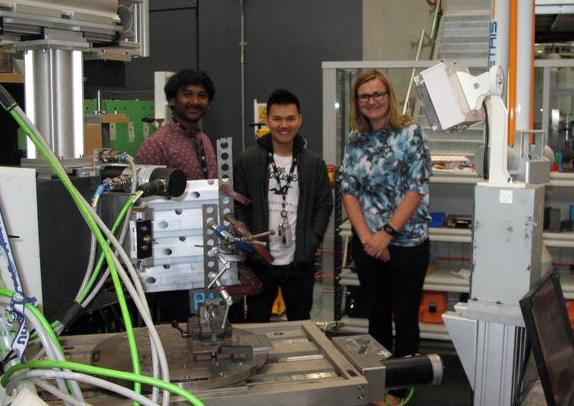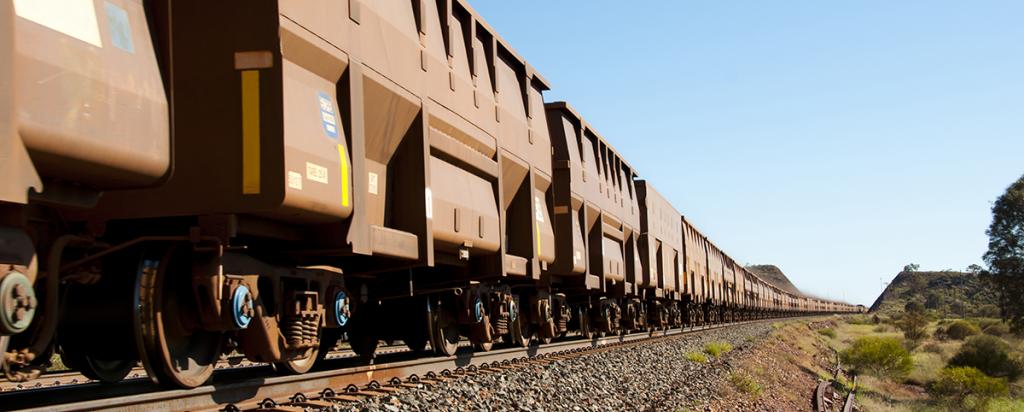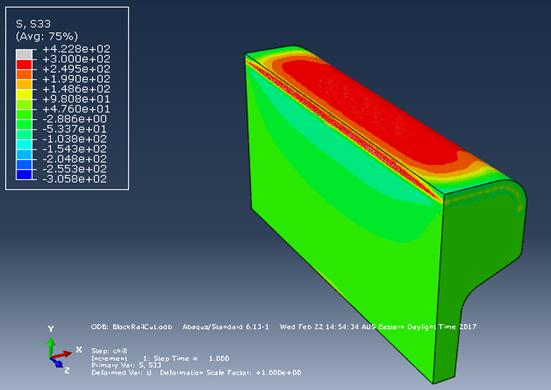

Published on the 30th November 2021 by ANSTO Staff
Key Points
-
An advanced approach to fix wear damaged rails in remote locations using a repair technology has been shown to be viable for large-scale use
-
The laser cladding repair method could increase the service life of rails and reduce maintenance time and costs
-
Neutron scattering experiments on the Kowari instrument at ANSTO revealed stresses in the rail created by the repair process
An advanced approach to fix wear damaged rails in remote locations using a repair technology has been shown to be viable for large-scale use in neutron scattering experiments.
Researchers from Monash University and ANSTO collaborated with engineers from the Institute of Railway Technology (IRT), the premier track and vehicle railway research centre in Australia and Hardchrome Engineering, a sovereign heavy manufacturing company to develop a reliable and efficient laser-based rail repair technology.

Taposh Roy (left) , and Quan Hoi (centre) with Anna Paradowska at the Kowari instrument
The team used a nuclear technique at ANSTO’s Australian Centre for Neutron Scatteringon the Kowari instrument to evaluate a laser cladding repair technique, which is an established method to repair high-value components in other industries on heavy haul rails.
The method could increase the service life of rails and reduce maintenance time and costs, as repairing rails is preferable to replacing them.
Industry partner Hardchrome, an ARC Linkage project partner, have vast experience and expertise in the use of laser cladding technology for manufacturing and repairs in the mining sector.
Heavy haul rails repairs, however, present significant challenges to the manufactures as they cannot be performed in the controlled environment of the factory but rather need to be done in the remote areas of the Australian outback.
In research published in the Journal of Materials Processing Technology, they conclude that advanced laser technology could be used on heavy haul rails and that detrimental stresses could be reduced or mitigated from critical regions of the repair.
With laser cladding, repairs are made by coating the damaged rail surface with a stainless steel or cobalt-based alloy in single or double layers using a laser technology.
“Laser cladding can deposit these beneficial materials onto damaged areas but can also introduce or re-distribute residual stresses,” explained Taposh Roy, Monash PhD graduate, currently a Project Engineer Melbourne Metro Trains.

Investigators used neutron scattering on the Kowari strain scanner on a full-scale railhead to measure residual stresses created by the heat generated by the laser during the cladding deposition process (pictured above).
As part of this, the team developed a new procedure to evaluate residual stresses in thick sections of full-scale cladded rails.
“Only neutrons can penetrate through the deep surface of the rail material, and measure full triaxial stress distribution non-destructively with little preparation” said Roy.
To acquire measurements in small gauge volumes on a large path length through the steel, they made blind holes in the sample. Taking measurement at the middle of the two holes, also avoided a disturbance of local stresses.
“We found that the application of a post cladding heat treatment significantly reduced the residual stresses from the surface and the subsurface of the cladded rails,” said Roy.
The method appears to be superior to conventional arc weld based cladding methods, the most common techniques to repair wear damage in rails.
“These successful in-house repair trials are very encouraging to explore further the application of this technology as a portable and mobilised unit, that can be deployed to address the rail maintenance problems in remote areas of Australia,” said Prof Anna Paradowska, Industry Engagement Manager, Australian Centre for Neutron Scattering and Conjoint Professor The University of Sydney.
This research was a finalist in ANSTO’s Neutron and Deuteration Impact Awards, demonstrating its relevance to transport, one of Australia’s research priorities.


